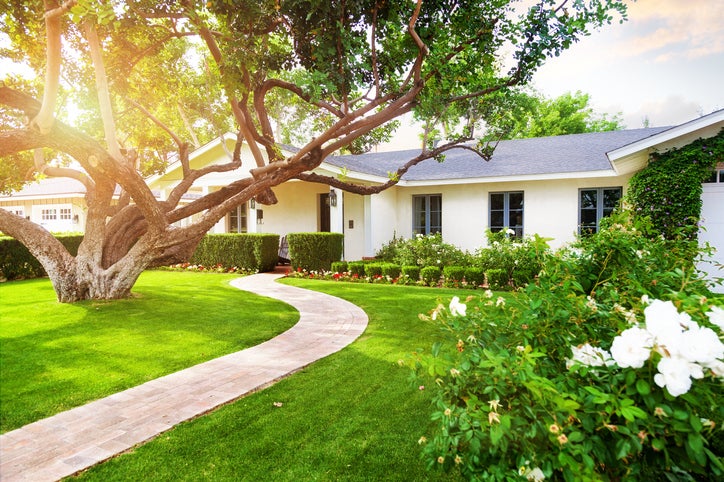I have a dead tree on my property that I am not allowed to remove even though it could cause damage. Here’s why

When my husband and I came across the opportunity to purchase a new construction home about 15 years ago, we thought it was a good idea. We had sold our previous home and were having a hard time finding existing homes in our price range in a neighborhood we liked. So we decided to stay in the same neighborhood and build a house from scratch.
Unfortunately, we encountered many challenges during the process of building our home, including significant delays and unexpected expenses that raided our savings accounts. But long after we moved home, another problem arose. And it’s something that still haunts us to this day.
If you do not have full control of your property
A few years ago, my husband and I needed to add a retaining wall to our backyard. When we went to submit our permit to our township, we were told that the wall could not cover our entire yard because part of our yard was designated as a conservation area.
This was news to us. But sure enough, when we read the property survey carefully (something we somehow ignored when we first signed on for the house), we found out that part of our backyard was actually a conservation easement.
If there is a conservation easement on your property, the property is still yours. However, there are restrictions designed to preserve the land in its original form. Because permanent structures cannot be built on conservation land, the retaining wall plan had to be changed. Additionally, existing vegetation cannot be removed, even if it is dangerous.
For this reason, my husband and I have dead trees on our property. Because it is in our conservation easement, removal is prohibited. You cannot be fined if you fall during a storm. We may only be fined if we actively remove it ourselves.
Read more: Check out our picks for the best homeowners insurance companies
But that’s not much consolation. This is because if a tree falls during a storm, it is likely to cause damage to our property. At least I expect it will destroy our fence. And at that point, our only recourse is to file a claim against our homeowners insurance and hope that the problem at hand is resolved.
Even if we are covered, we will still have significant deductibles to pay depending on the insurance plan. And paying a deductible to your home insurance company is more than it costs to remove the tree in the first place.
Be careful when buying a home
My husband and I had never heard of a conservation easement until we found out there was one on our property. And because it’s somewhat rare, it’s not something homebuyers tend to be wary of.
However, if you’re buying a home, it’s definitely helpful to look into whether your property has conservation land. Reviewing a property survey can provide the answer.
if you do There are easements on your property so be careful. If there are no trees on that land, it might be okay. Otherwise, you run the risk of creating a time bomb in your backyard that will destroy the right mix of rain and wind and result in an insurance claim.
Our Picks for the Best Homeowners Insurance Companies
There are many homeowners insurance companies to choose from. We researched dozens of options and selected our favorites. here. Looking for a green build discount or easy bundle policy? Do you want an easy-to-use interface? Read our free expert reviews Get a quote today.



